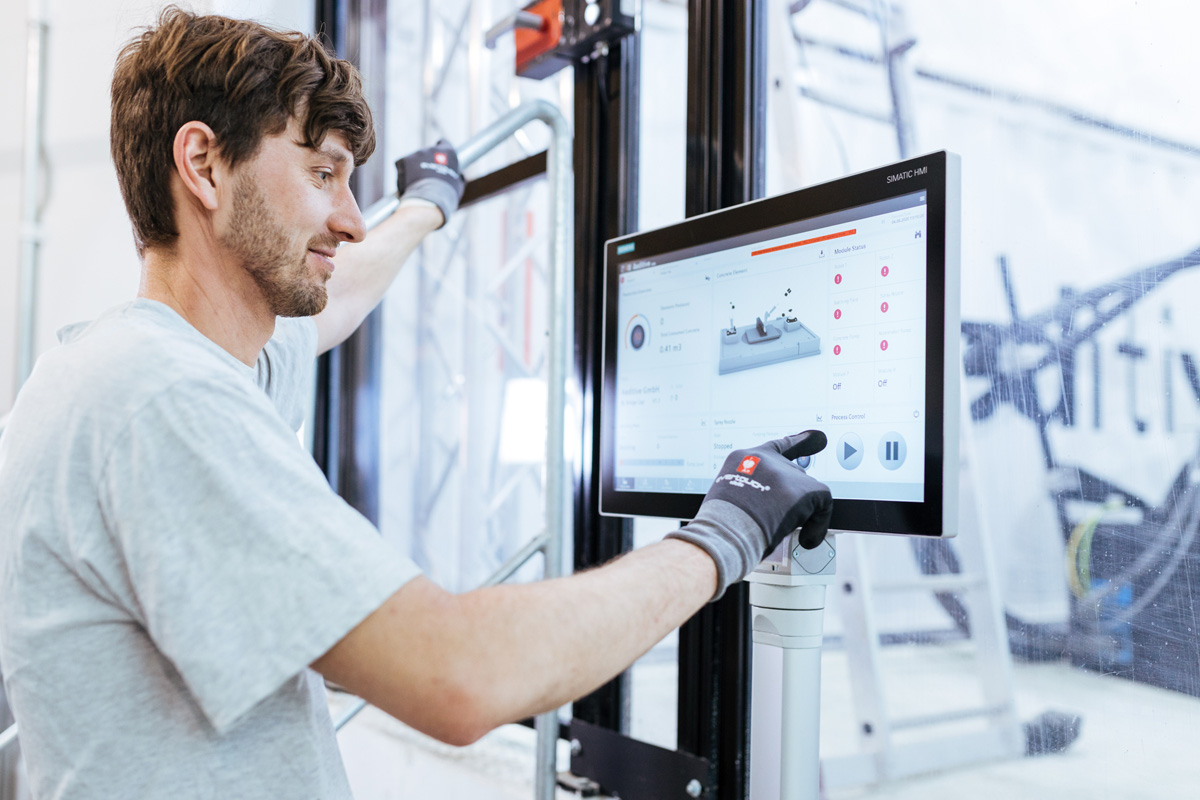#Concrete Aeditor #Technologies & Trends
Joining up the dots of digitalization in the construction industry

Everyone’s talking about Industry 4.0, and BIM, the Building Information Model, has already entered the tenth dimension. Digitalization seems to have arrived in the construction industry. But look more closely and you’ll notice that digitalization is far from being industry-wide implemented; this is supported by several studies, which paint a very heterogeneous picture [1].
All too often, it is still just a matter of digitizing analog media (there’s a clear distinction in the English terminology: Digitization vs. Digitalization). There is still a long way to go when it comes to the intelligent capture, processing and use of high-quality information to optimize processes and increase efficiency along the entire value chain. Recent studies confirm this: Most stakeholders see a clear need to catch up in digitalizing their operations and applying digital solutions [2].
Digital planning – and then what?
One of the reasons for this is the high degree of fragmentation in the industry and a significant segmentation of the process chain. At the same time, we see that digitalization is well advanced in the planning phase: 4D modeling, project planning, project costing, and project control software are widely used, and the creation of “digital twins” is commonplace. The planning phase is therefore largely digitalized.
However, a significant gap is regularly observed in the production phase, or after completion of the construction work at the very latest. Changes to what was planned are not tracked and the actual implementation is not digitally recorded. Increased stress and time pressures, simple forgetting and other mostly human factors disrupt the digital process.
Successfully continuing the digital thread with robotic 3D printing.
Automated production processes such as robotic 3D concrete printing can make a significant contribution to bridging this digital divide. Technology helps to pick up the digital thread from the planning stage and continue it seamlessly beyond production, in addition to direct production benefits such as increased efficiency, productivity, workplace safety and sustainability.
Tight integration with production process ensures continuous data generation and consistently high data quality. Based on the digital 3D model, a continuous, sensor-supported comparison of target and actual data is an integral part of the robotic concrete printing process. This not only ensures high production quality, but also generates a “digital twin” for each individual component. It is precise, consistent and reliable.
The data generated in this way can then be used both upstream and downstream in the process chain. It serves as a reliable source of lessons learned and robust planning information. And it provides valuable insights for later lifecycle stages, such as assembly, maintenance or recycling.
Prompt action brings advantages and benefits.
Of course, this is only one building block of a fully digitalized process chain. But it is a crucial building block because it occurs at a point in the process where digitalization often breaks down. This is where automation has the potential of being a key driver of the seamless digital transformation in the construction industry.
Acting now is not only about setting the right course for the future. It is also about creating immediate value for customers and gaining a clear competitive advantage. Comprehensive and integrated solutions such as Concrete Aeditor, with its modular and scalable architecture, can be easily integrated into existing facilities and processes and smoothly ramped up alongside traditional production.
Give yourself a head start – contact us now to learn more about RSP and Concrete Aeditor and how they can help you automate and digitalize your precast concrete production site.
+++ References (in German):
[1]: Research study: Stand der Digitalisierung in der Baubranche.
The study was conducted as part of the “Digital Construction Management” project, funded by the Federal Ministry of Digitalization and Transport (BMDV), and carried out by the Rhineland-Palatinate Technical University Kaiserslautern (RPTU), the Fraunhofer Institute for Experimental Software Engineering (IESE), the Fraunhofer Institute for Industrial Mathematics (ITWM), the Science and Innovation Alliance Kaiserslautern (SIAK), and buildingSMART Germany.
[2]: PwC study on the Construction Industry 2023: Die Digitalisierung stockt, in Sachen Nachhaltigkeit geht es voran
